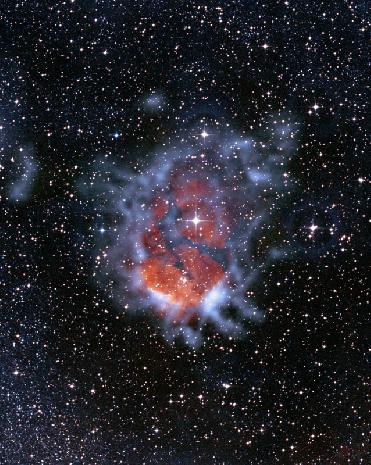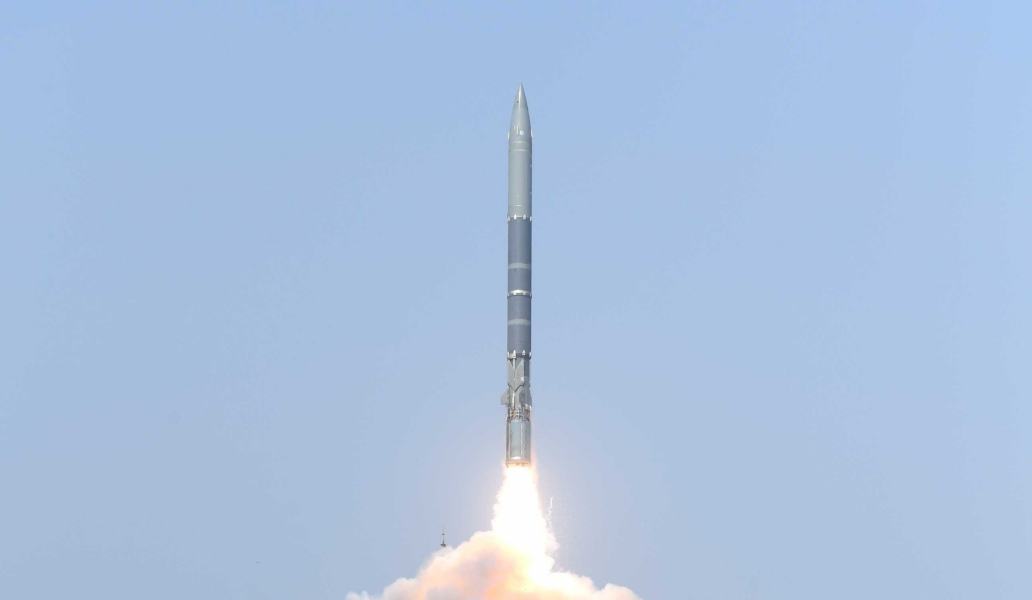
Colour composite image of RCW120 taken with the LABOCA camera on the 12-m APEX telescope. Here, the submillimetre emission is shown as the blue clouds surrounding the reddish glow of the ionised gas (shown with data from the SuperCosmos H-alpha survey). Credit: ESO/APEX/DSS2/SuperCosmos.
PARIS (BNS): The curiosity about the birthplace of new stars has been thrown up by an Atacama Pathfinder Experiment (APEX) image.
The image illustrates the power of sub-millimetre-wavelength astronomy and reveals how an expanding bubble of ionised gas about ten light-years across is causing the surrounding material to collapse into dense clumps that are the birthplaces of new stars.
Scientists said sub-millimetre light is the key to revealing some of the coldest material in the universe, such as cold, dense clouds. This region, called RCW120, is about 4,200 light years away from Earth, towards the constellation of Scorpius.
"A hot, massive star in its centre is emitting huge amounts of ultraviolet radiation, which ionises the surrounding gas, stripping the electrons from hydrogen atoms and producing the characteristic red glow of the so-called H-alpha emission," they said.
It is believed that as this ionised region expands into space, the associated shock wave sweeps up a layer of the surrounding cold inter-stellar gas and cosmic dust. Scientists said this layer becomes unstable and collapses under its own gravity into dense clumps, forming cold, dense clouds of hydrogen where new stars are born.
"However, as the clouds are still very cold, with temperatures of around -250° Celsius, their faint heat glow can only be seen at sub-millimetre wavelengths. Sub-millimetre light is therefore vital in studying the earliest stages of the birth and life of stars,” they said.
The sub-millimetre wavelength data was taken with the LABOCA camera on the 12-m Atacama Pathfinder Experiment (APEX) telescope, located on the 5,000 m high plateau of Chajnantor in the Chilean Atacama desert. Thanks to LABOCA's high sensitivity, astronomers were able to detect clumps of cold gas four times fainter than previously possible. Since the brightness of the clumps is a measure of their mass, this also means that astronomers can now study the formation of less massive stars than they could before, the scientists said.
ESO, along with international partners, is building a next generation sub-millimetre telescope, Atacama Large Millimeter/submillimeter Array (ALMA), on the plateau of Chajnantor. Scientists have said that ALMA will use over sixty 12-m antennas, linked together over distances of more than 16 km, to form a single, giant telescope.
APEX is a joint collaboration between the Max-Planck-Institute for Radio Astronomy (MPIfR), the Onsala Space Observatory (OSO) and ESO. The telescope is based on a prototype antenna constructed for the ALMA project. Operation of APEX at Chajnantor is entrusted to ESO.
 Previous Article
Previous Article Next Article
Next Article













The Indian Air Force, in its flight trials evaluation report submitted before the Defence Ministry l..
view articleAn insight into the Medium Multi-Role Combat Aircraft competition...
view articleSky enthusiasts can now spot the International Space Station (ISS) commanded by Indian-American astr..
view article